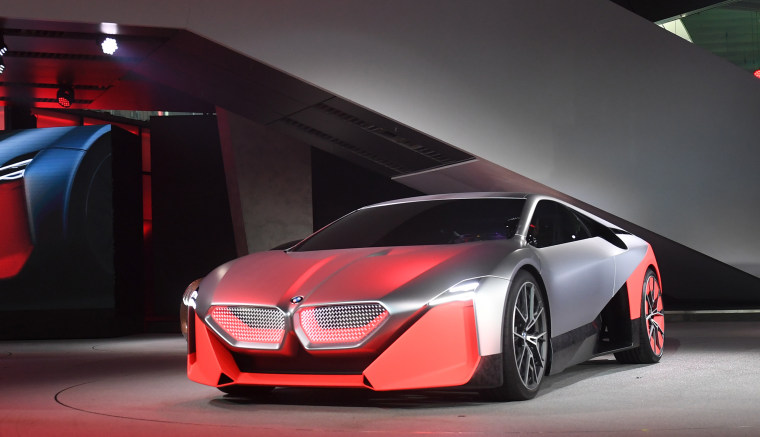BMW is doubling down on electric cars, announcing this week it would have 25 models in showrooms by 2023.
That's two years earlier than its original plans, and reflects a broader industry push to get more battery-electric vehicles, plug-in hybrids and conventional hybrids to market.
The company also said it believes it can double its current sales of battery-based vehicles by 2021, with sales expected to grow 30 percent annually.
An early pioneer in battery power, BMW has slipped behind some of its rivals but hopes to make up for lost time with its M Next plug-in and a pure battery-electric vehicle named iNext.
A key part of BMW's program is to develop products that retain the high-performance nature of the company's traditional products, said Adrian van Hooydonk, Senior Vice President BMW Group Design.
“The BMW Vision M Next provides a glimpse into the future of sporty driving,” said van Hooydonk. "It demonstrates how state-of-the-art technology can also make the experience of driving yourself purer and more emotionally engaging.”
The automaker launched its first all-electric model, the i3 city car, in 2013, along with the i8 plug-in hybrid sports car. It has updated both since then but delayed adding new products to its BMW i sub-brand since then. It now has given a hint of what is in the works with the all-electric iNext concept, unveiled last September, and the M Next plug-in.
Both are rolling test beds that not only focus on what the automaker calls its “electrified future” but also on the role autonomous technology will play for the brand. Switched into hands-free mode, both can serve as living rooms on wheels where passengers can relax and ignore the hassles of dealing with traffic.
In manual mode, however, the M Next operates more like a classic, performance-oriented BMW, said van Hooydonk. The concept version produces a combined output of about 600 horsepower, enough to hit 62 miles per hour in three seconds, BMW said, with a top speed of 186 mph. There is also a “Boost” button that will increase performance for a few seconds.
But unlike the all-electric iNext, the M Next pairs electric motors and a gasoline engine. Like other automakers, BMW isn’t sure how quickly demand will build for all-electric vehicles, with officials pointing to a lack of a global charging infrastructure, as well as public skepticism. At least for the near future, it sees such plug-in hybrids playing an important role.
Officials in a number of major European cities, such as London, have been exploring the idea of banning vehicles from their centers unless they operate in zero-emission mode. The M Next would automatically switch to battery power, according to BMW, when it entered those city centers.
Both the Vision M Next and Vision iNext concepts will strongly influence the new battery-electric models BMW plans to start rolling out next year, as well as upcoming plug-in hybrids, the automaker said.
During a presentation in Palm Springs earlier this year, company officials gave a sneak peek at the battery-electric technology that will power future products. These include models that will use front-, rear- or all-wheel-drive layouts, for one thing. And their modular design will allow the use of motors that can deliver more than 700 horsepower, challenging the performance of even BMW’s most exotic “M” performance models, such as the iconic M3.
